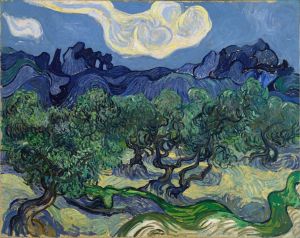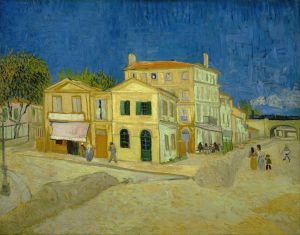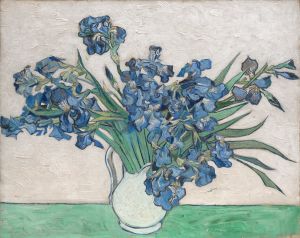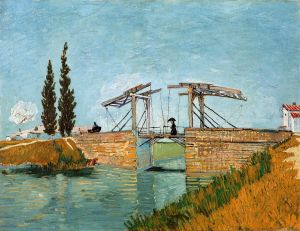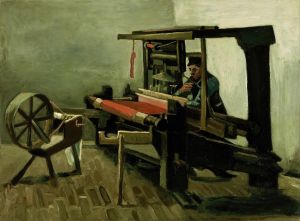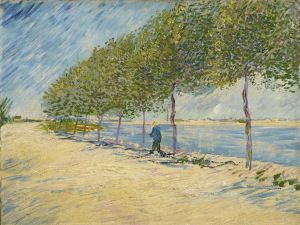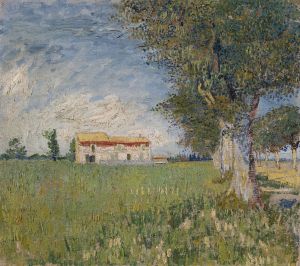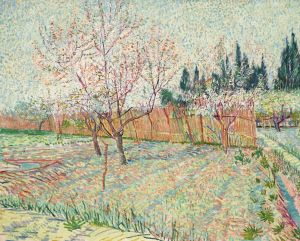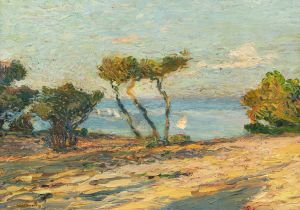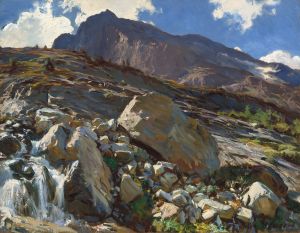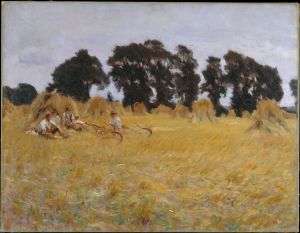
Wheat Field with Cypresses
A hand-painted replica of Vincent van Gogh’s masterpiece Wheat Field with Cypresses, meticulously crafted by professional artists to capture the true essence of the original. Each piece is created with museum-quality canvas and rare mineral pigments, carefully painted by experienced artists with delicate brushstrokes and rich, layered colors to perfectly recreate the texture of the original artwork. Unlike machine-printed reproductions, this hand-painted version brings the painting to life, infused with the artist’s emotions and skill in every stroke. Whether for personal collection or home decoration, it instantly elevates the artistic atmosphere of any space.
"Wheat Field with Cypresses" is a series of paintings created by the Dutch post-impressionist painter Vincent van Gogh. These works were produced during the summer of 1889 when Van Gogh was staying at the Saint-Paul-de-Mausole asylum in Saint-Rémy-de-Provence, France. The series is notable for its vibrant colors and dynamic brushstrokes, which are characteristic of Van Gogh's mature style.
The primary version of "Wheat Field with Cypresses" is housed in the Metropolitan Museum of Art in New York City. This painting measures 73 cm by 93.4 cm and was completed in September 1889. Van Gogh painted this version en plein air, directly observing the landscape around the asylum. The composition features a golden wheat field, a group of cypress trees, rolling hills, and a sky filled with swirling clouds. The cypress trees, which are a recurring motif in Van Gogh's work, stand tall and dark against the bright, sunlit field, creating a striking contrast.
Another version of the painting, which is slightly smaller, is part of the collection at the National Gallery in London. This version was created in the same year but was painted indoors, based on the original outdoor study. It measures 72.1 cm by 90.9 cm. The London version retains the same composition and vibrant palette but is noted for its slightly more refined and detailed execution.
A third version exists as well, which is part of a private collection. This version is similar in size to the one in the National Gallery and also follows the same compositional elements. Each version of "Wheat Field with Cypresses" showcases Van Gogh's fascination with the Provençal landscape and his ability to convey emotion through color and form.
Van Gogh's time at the Saint-Paul-de-Mausole asylum was a period of intense creativity despite his mental health struggles. During his stay, he produced some of his most famous works, including "The Starry Night" and "Irises." The "Wheat Field with Cypresses" series is a testament to his enduring passion for nature and his innovative approach to capturing its essence on canvas.
The paintings are celebrated for their expressive use of color and energetic brushwork, which convey a sense of movement and vitality. The cypress trees, in particular, are rendered with bold, swirling strokes that create a dynamic interplay with the sky and the wheat field. This technique exemplifies Van Gogh's unique ability to infuse his landscapes with a sense of life and emotion.
"Wheat Field with Cypresses" remains one of Van Gogh's most beloved series, admired for its beauty and the insight it provides into the artist's state of mind during a challenging period of his life. The paintings continue to be studied and appreciated by art historians and enthusiasts alike, serving as a powerful example of Van Gogh's artistic legacy.







